8Japanese maple
Acer palmatum
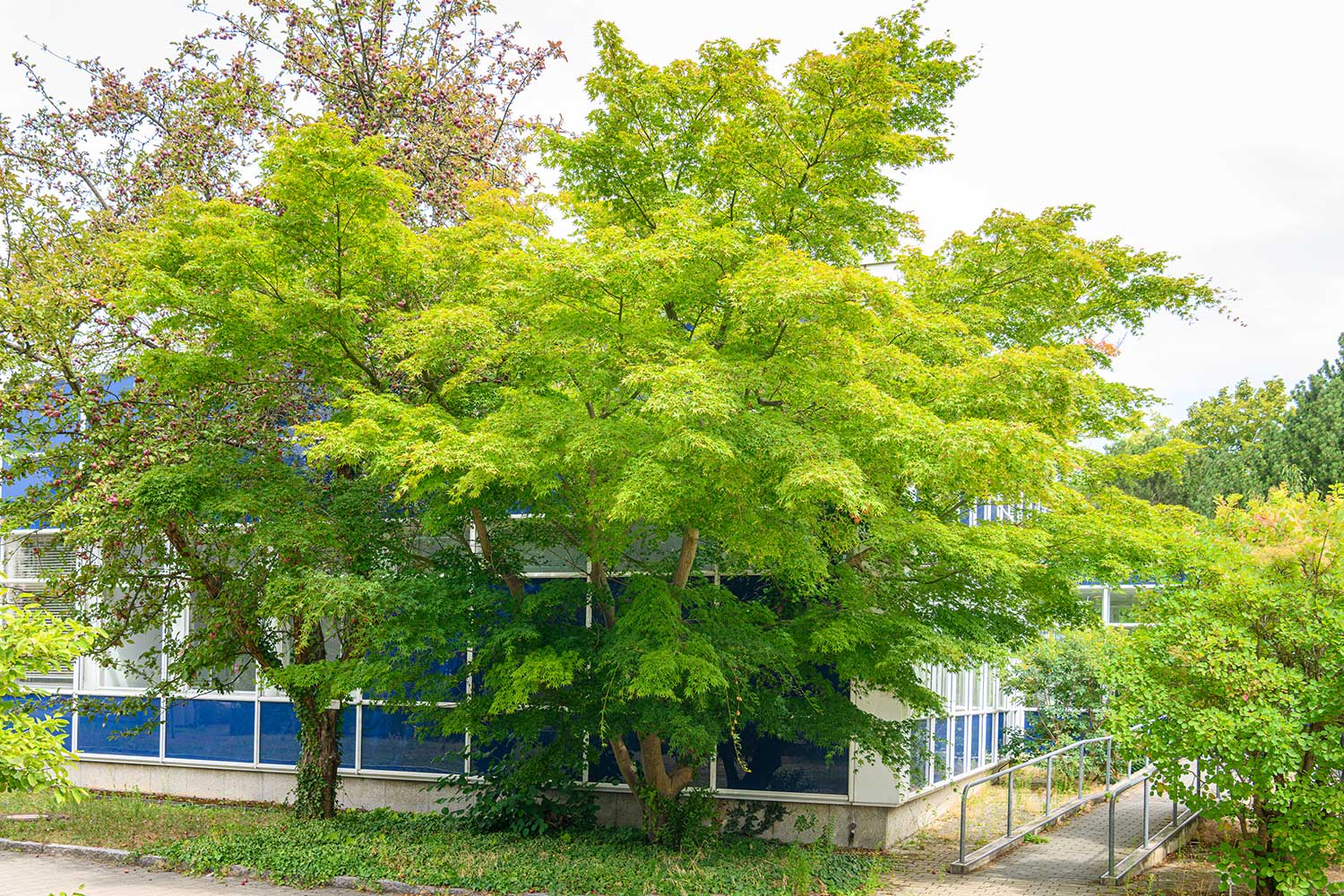
The eighth tree is a Japanese or palmate maple, botanical name Acer palmatum, of the soap tree family or Sapindaceae.
The botanical name refers to the shape of the leaves. In Latin, Acer means sharp, and palmatum derives from palma for palm, indicating that the leaves are shaped like a hand.
It is deciduous and slow-growing, ranging in size from a large shrub to small multi-stemmed tree with a bushy top. Its leaves are opposing and split into five lobes until just below the center, and then taper to a point. The bark of the tree is smooth and brown, becoming light gray with age.
The flowering time is between April and June, when red, five-petaled flower clusters form.
The cleft fruits, typical of maples, are split into two wings, each containing a seed.
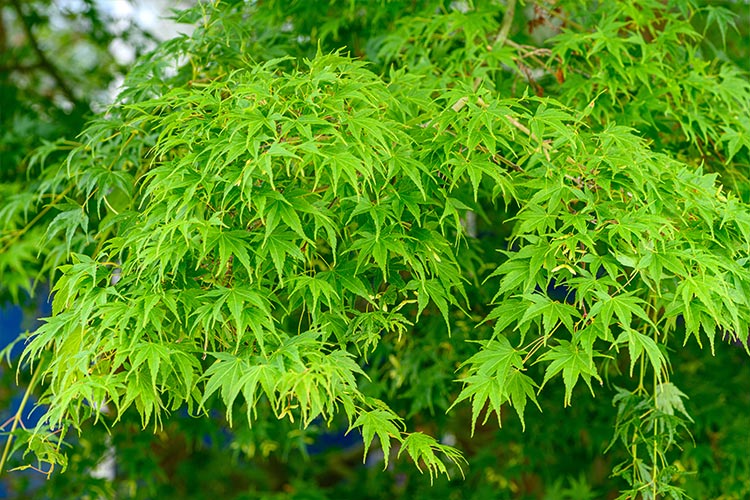
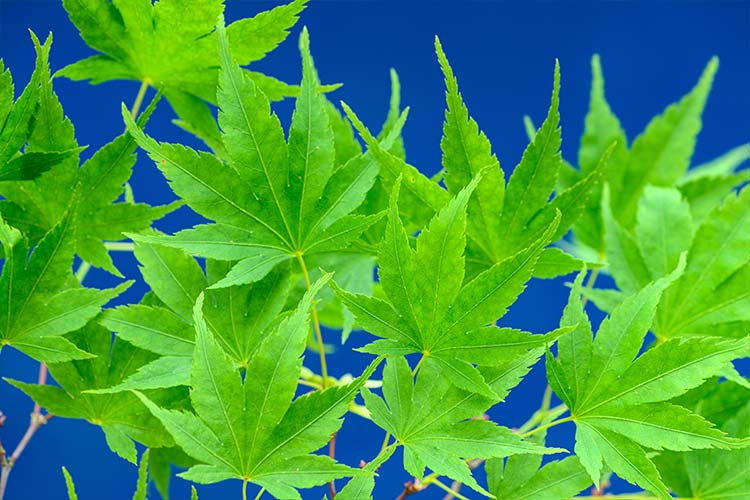
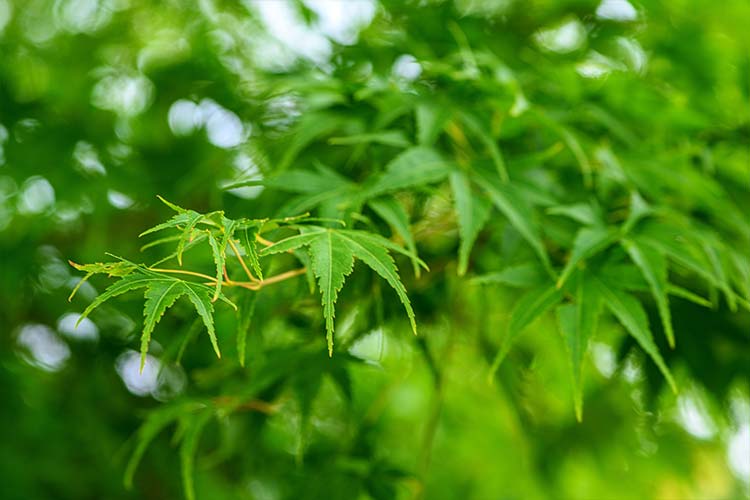
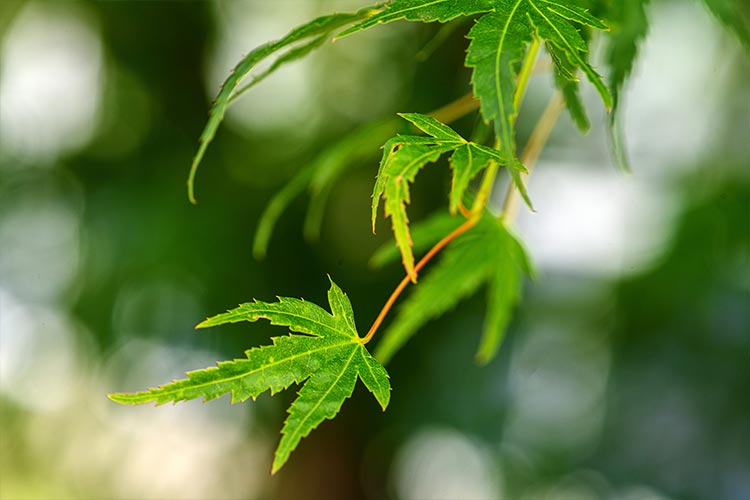
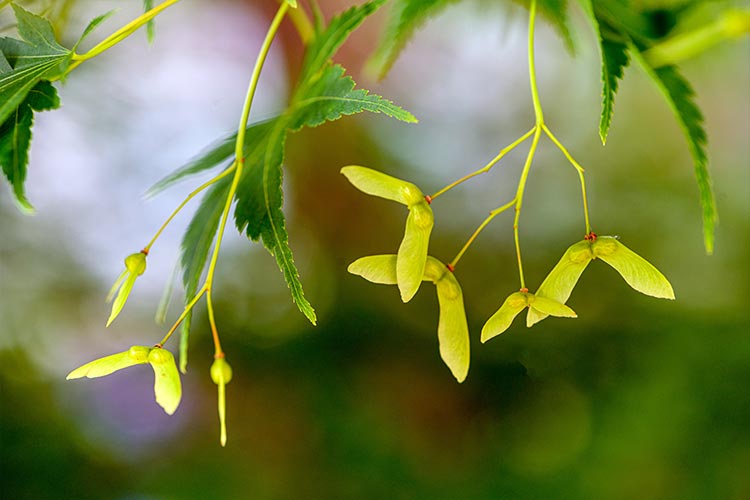
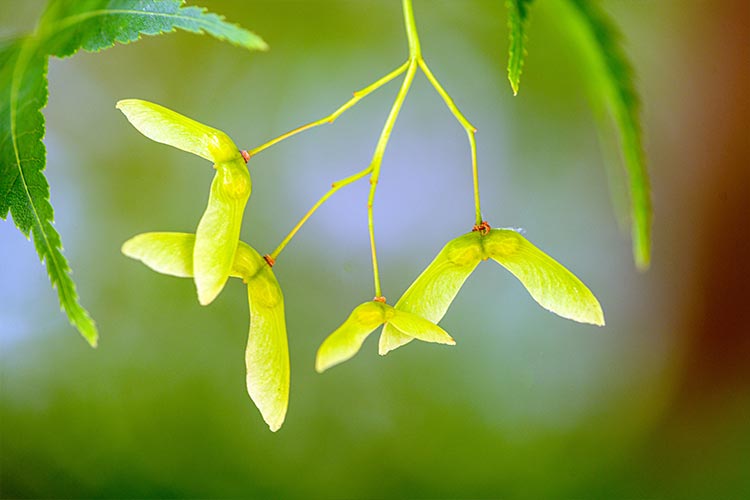
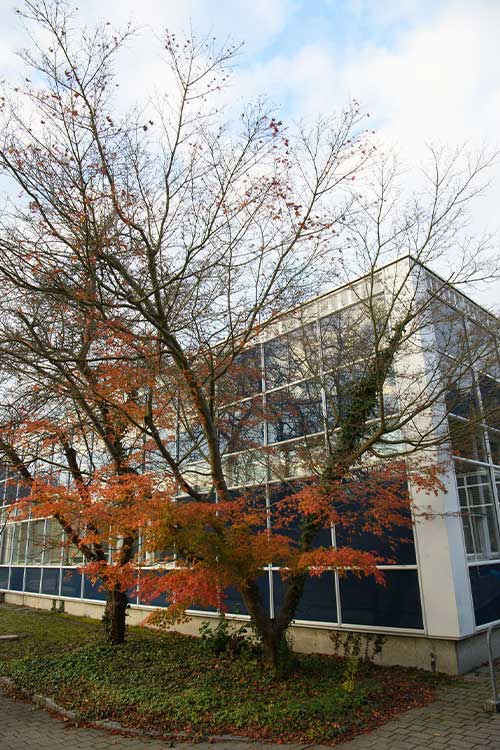
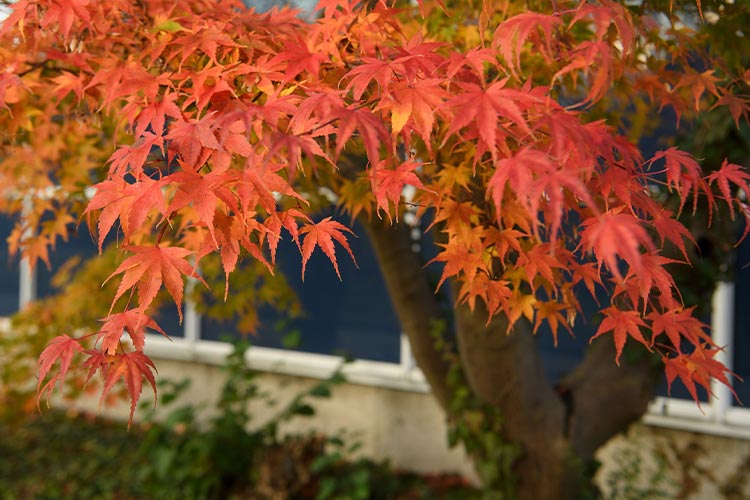
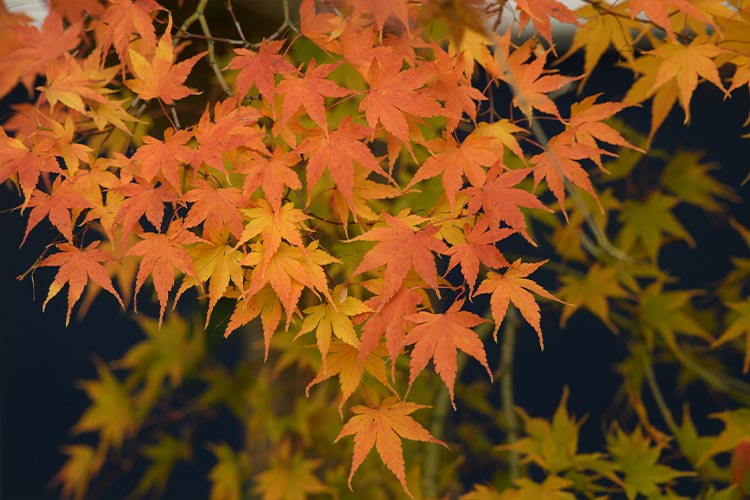
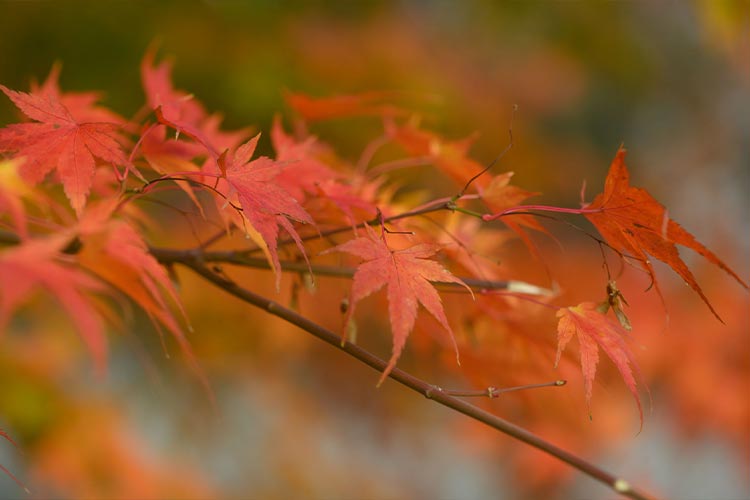
The Japanese maple prefers well-drained, moist and humus-rich sandy soils; it is most suited to semi-shady to sunny locations and is only moderately frost-hardy. The original habitats were Japan and Korea. The leaves turn a strong purple to brown-red in autumn. Because of its high ornamental value, it was cultivated early in history. Acer palmatum therefore varies widely; today there are over 500 varieties in many shapes and colors. In its native country, it grows into trees 15 meters tall and is considered the most important tree in traditional garden design. Its coloration announces the autumn.
The tree came to Europe towards the end of the 18th century, probably brought by the Swedish physician and botanist Carl Peter Thunberg. His drawings of Japanese maples soon became synonymous with the high art of Japanese gardening. Thunberg also gave the tree the botanical name palmatum, taking a cue from its Japanese name. There the tree is called Momiji, which means baby's hand.
In Europe, too, the tree is valued as an ornamental plant in gardens and parks because of its intense fall color and graceful form. Specimens imported or grown here grow more slowly than in their native lands and rarely reach more than ten meters in height because of the local climate and shorter growing season.
As with other maple species, the sap of the Japanese maple contains relatively high levels of sugar, so it can either be consumed directly as a beverage or boiled down into syrup. However, the sugar content is much lower than that of the Canadian sugar maple (Acer saccharum), from which maple syrup is commonly made. The young, fresh leaves consist of five percent protein and can be eaten. The sweet flowers are considered particularly tasty.
An infusion of tea made from fresh, young leaves is said to have antipyretic, antihypertensive, and anti-inflammatory effects and and reduce calcification of blood vessels. Tea made from grated bark is said to be effective against gastrointestinal complaints and as an ointment against eczema. Compresses made from maple leaves are said to be effective against insect bites, tired feet and swollen joints.
Last but not least, maple contains saponins, a soap-like substance, which is also the reason for the name soap tree. Maple leaves are therefore considered a basic ingredient for homemade dishwashing and laundry detergents.